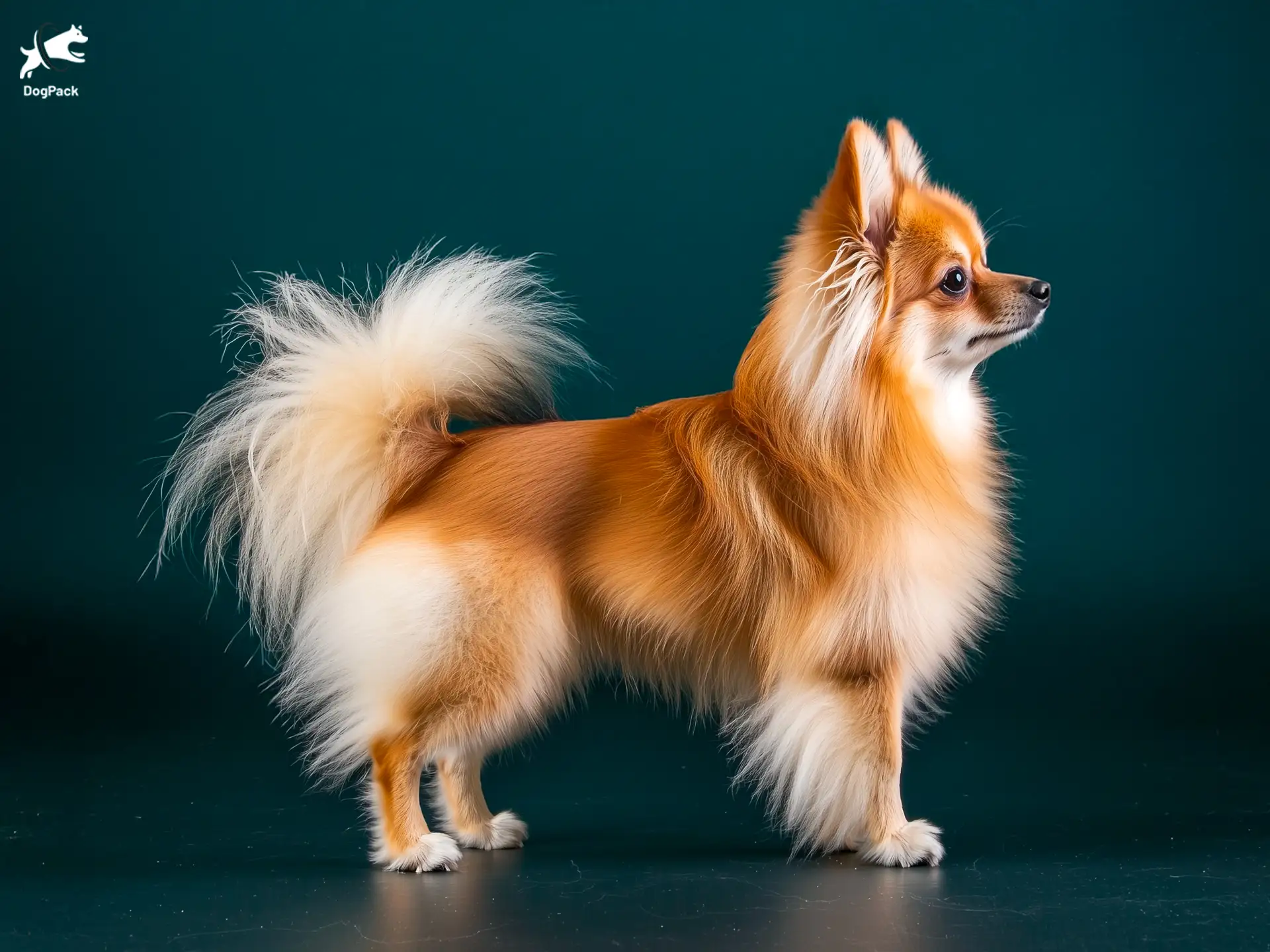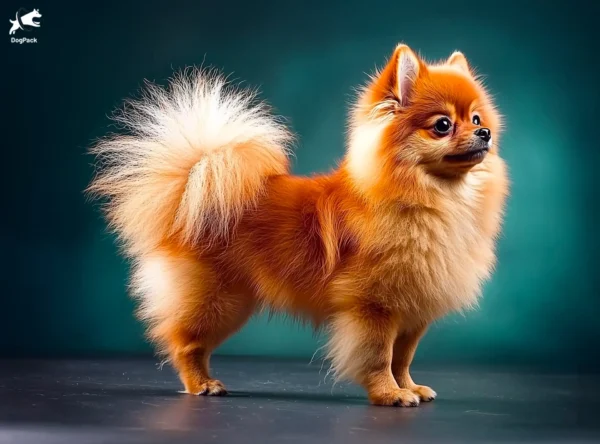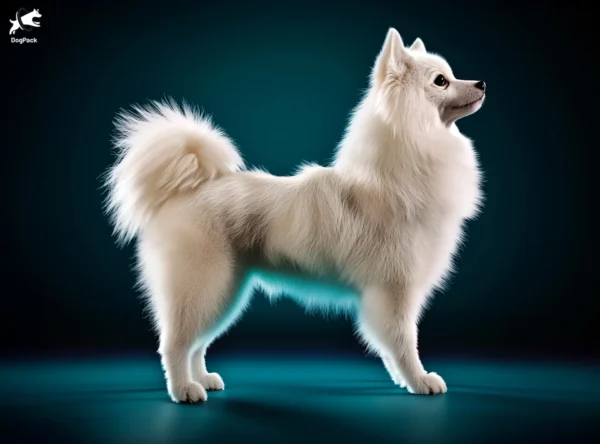Miniature Spitz Dog Breed Info & Overview
Picture a tiny, spirited fluff ball with enough cheeky charm to brighten any room—that’s the Miniature Spitz in a nutshell. Beloved for their alert nature and playful hearts, these dogs boast a loyal streak that bonds them closely with their families. Small but brimming with character, they make wonderful companions for various lifestyles.
Characteristics
Pictures
Breed History
Tracing its lineage back to ancient Nordic herding and guardian dogs, the Miniature Spitz likely developed from larger Spitz varieties selectively bred down for size. Throughout Germany, these spirited canines served as vigilant watchdogs, alerting owners to any unusual activity. Over time, they became beloved for their charm, loyalty, and ability to adapt to smaller living spaces.
In the early days, their job was more than just companionship—they actively protected farmsteads and even helped maintain rodent control. Yet, as modern living embraced smaller dogs, the breed’s petite form and big personality became a hit in urban settings. These dogs’ watchdog roots still shine through, making them cautious of strangers yet deeply connected to their human families.
Although once overshadowed by larger relatives like the Mittel and Keeshond, the Miniature Spitz carved its own path through determined fanciers who appreciated its spirited nature. Over the centuries, it found recognition from kennel clubs worldwide, including the Fédération Cynologique Internationale. Today, fans revere its historical watchdog heritage and playful, affectionate demeanor, creating a unique legacy in the Spitz lineage.
Temperament, Personality
Lively and cheerful, these dogs exude a big personality packed into a small frame. They thrive on human interaction, often forming deep bonds with their favorite people. While they can be slightly reserved with strangers, early socialization works wonders in helping them feel more at ease. Expect a curious companion who relishes in daily activities and mental stimulation.
The breed’s signature alertness translates to a natural tendency to be vocal, particularly when someone new approaches the home. This trait can be managed through consistent, positive training, ensuring their watchful spirit doesn’t become excessive barking. Devoted and bright, they crave both companionship and praise, showing off their clever tricks whenever given the chance.
The Miniature Spitz loves children, but supervision is essential to teach youngsters gentle handling. Their playful streak shines when interacting with respectful kids or friendly pets, although they might test boundaries if left unchecked. With the right balance of structure, encouragement, and early introductions, these spirited canines can become delightful, well-adjusted companions in any home.
Physical Characteristics
Often mistaken for a tiny fox at first glance, these dogs feature a wedge-shaped head, pointed ears, and bright, alert eyes. Their thick double coat stands away from the body, giving them a plush silhouette. Although small in stature, their proud posture and high-set tail create an air of confidence that far surpasses their actual size.
Colors can range widely, from classic white and black to orange, cream, or even wolf sable. Regardless of shade, that fluffy coat requires regular care to keep it tangle-free and shiny. Their compact form is balanced and agile, helping them move briskly and turn on a dime—perfect for quick bursts of play or impressive spins when excited.
The Miniature Spitz typically weighs between eight and twelve pounds, with a sturdy frame hidden beneath all that fluff. Though small, they exhibit a surprisingly strong gait and ample endurance for daily adventures. With their lively expression and trademark plumed tail, there’s no mistaking their perky presence in any setting, from playful backyard romps to bustling city walks.
Health Issues
Like many small breeds, these pups can be prone to patellar luxation, where the kneecap temporarily shifts out of place. Regular vet checkups and keeping them at a healthy weight can help manage or prevent discomfort. Dental issues are another concern, so consistent oral hygiene—like brushing and annual cleanings—helps maintain strong teeth and gums.
Collapsing trachea, a condition where the windpipe weakens, can sometimes occur in these dogs, especially if they’re overweight or frequently pull against their collars. Using a harness instead of a collar can help minimize strain. Regular veterinary evaluations, including listening for any signs of respiratory distress, are beneficial for early detection and effective management of potential issues.
In general, the Miniature Spitz enjoys a lengthy lifespan, but routine checkups ensure any genetic predispositions are caught early. Responsible breeders often conduct health screenings to reduce the risk of passing on hereditary conditions. With regular exercise, a balanced diet, and attentive owners, many individuals remain robust, enjoying a high quality of life well into their golden years.
Grooming Needs
Maintaining that beautiful double coat requires consistent brushing at least two to three times a week. A pin brush or slicker brush helps remove loose fur and prevent mats, particularly around the collar area and behind the ears. Regular grooming not only keeps them looking sharp but also reduces shedding and dander throughout your home.
Because of their thick undercoat, an occasional bath with a mild dog shampoo helps keep their skin and fur in top condition. However, be sure to dry thoroughly to avoid any moisture trapping, which can lead to hot spots or skin irritation. Routine nail trims and ear checks also contribute to a well-rounded grooming routine.
For a Miniature Spitz, regular brushing not only manages shedding but also fosters bonding time with your dog. Pay special attention to the chest, neck, and tail areas where mats are likely to develop. With a consistent regimen, owners can keep that luxurious coat in peak shape and ensure their spirited pal always looks and feels great.
Exercise Requirements
Despite their small size, these spunky dogs need daily activity to stay mentally and physically stimulated. Short walks or spirited play sessions in the yard can suffice, but they’ll appreciate a chance to roam and sniff around new environments. Interactive toys, puzzle feeders, or brief agility exercises also help keep their sharp minds from getting bored.
Variety is key: combining fetch games, brisk walks, and even basic obedience drills will challenge both body and brain. Their alert nature benefits greatly from stimulation, preventing unwanted behaviors like excessive barking or chewing. While they enjoy energetic bursts, remember they are still a small breed and may tire quickly. Offering rest breaks ensures they don’t overdo it.
A Miniature Spitz does well with at least 30 minutes of purposeful exercise each day, plus additional enrichment through toys or interactive play. They have a knack for thriving in apartments, provided they get enough outlets for their energy. Monitoring their activity and adjusting to individual needs ensures they remain healthy, happy, and ready to bounce into action.
Training Tips
Known for their intelligence, these dogs pick up new commands quickly, but they can also be a bit headstrong. Patience and consistency go a long way, especially when establishing basic manners and household rules. Reward-based methods, like offering treats and praise, resonate well with their desire to please, encouraging them to focus on tasks rather than getting distracted.
Socialization is equally vital, as it shapes a well-rounded personality. Introducing them to various environments, people, and other animals at a young age helps curb potential timidness or excessive barking. Short, focused training sessions usually work best, preventing information overload. With gentle guidance, they often perform tricks and commands with unmistakable enthusiasm.
For a Miniature Spitz, early housebreaking can be accomplished by establishing a consistent schedule and using crate training if needed. Due to their keen awareness, they can quickly recognize patterns—both good and bad—so staying positive helps reinforce desired behaviors. By blending fun activities and firm structure, owners can foster a cooperative, confident companion in no time.
Nutrition, Diet
Being prone to weight gain, especially around the midsection, a Miniature Spitz typically thrives on about half a cup to three-quarters of a cup of high-quality kibble daily, split into two meals. Opt for formulas formulated for small-breed dogs to support joint health and maintain proper energy levels. Monitor portion sizes closely to prevent overfeeding.
Look for diets rich in animal-based protein, such as chicken or fish, to maintain a robust coat and muscle tone. Supplements like omega-3 fatty acids can enhance coat sheen and reduce inflammatory risks. Ideally, select a blend with moderate fat content—around 15% to 18%—to keep their energy levels steady without pushing them into an unhealthy weight range.
Be mindful that some Miniature Spitz dogs show sensitivity to grain-based fillers, leading to digestive upset or itchy skin. Trial small portions of new foods and watch closely for adverse reactions. Given their propensity to snack, using healthy treats like boiled chicken bits or freeze-dried liver can reinforce training while still supporting a balanced, breed-specific diet plan.
Adoption, Breeders
To welcome a Miniature Spitz into your life, begin by researching recognized breed clubs or online networks dedicated to German Spitz enthusiasts. Reputable breeders prioritize health screenings and proper socialization, ensuring puppies start life on a positive note. Ask for medical records, meet the puppy’s parents if possible, and pay attention to the kennel environment before making a commitment.
If you’re not set on a brand-new puppy, consider checking rescue groups that specialize in rehoming Spitz breeds. Organizations like German Spitz Rescue UK often have older dogs looking for loving homes. Adopting an adult dog can be incredibly rewarding, and you might skip some of the intense early training phases that puppies require.
Before finalizing any adoption, confirm that the Miniature Spitz you’re considering has been examined by a veterinarian and is up-to-date on vaccinations. Look for an environment that prioritizes the dog’s well-being, whether through a structured foster program or a dedicated breeder. By doing your homework, you can find a new companion that seamlessly fits your household.
Family Pet?
Many owners describe these dogs as outgoing and vivacious, making them a strong candidate for households with older children. Their playful energy and smaller size can be an excellent match, provided that kids understand respectful interaction. Because of their watchdog tendencies, they’ll be quick to bark at unfamiliar noises, but consistent training can help maintain a peaceful environment.
Early introductions to other pets, especially cats and gentle dog breeds, can foster positive relationships. Ideally, these spunky canines prefer not to be overly pestered, so supervised interactions are wise. While their inquisitive nature often leads to fun play sessions, tension can arise if they feel cornered or startled. Setting clear boundaries helps ensure harmonious coexistence.
For families seeking an alert yet affectionate companion, the Miniature Spitz often fits the bill. They relish being part of daily routines and can adapt well to both cozy apartments and suburban homes. By providing enough stimulation, structured interactions, and plenty of love, families of various sizes can enjoy a happy, tail-wagging addition to their household.
Right For You?
Deciding whether this breed aligns with your lifestyle means considering energy level, grooming commitment, and potential noise. If you appreciate a spirited companion who thrives on human attention and can adapt to smaller living areas, these spunky pups could be a match. However, they may not suit those seeking a low-maintenance dog or preferring minimal bark alerts.
Time is another factor. Brushing sessions can become a bonding ritual, but they do require consistency. Plus, regular walks and mental challenges are non-negotiable for keeping them balanced. If your schedule can accommodate their need for attention, you’ll find them rewarding with unwavering loyalty, comedic antics, and endless affectionate moments that enrich your day-to-day routine.
For prospective owners ready for an interactive, friendly pet, the Miniature Spitz checks many boxes. Their vibrant spirit can bring joy to individuals, seniors, and families alike, as long as everyone understands the responsibility of proper training and grooming. Balancing patience with firm boundaries ensures these lively dogs remain confident, well-behaved, and a delight to have around.
Conclusion
Small but brimming with personality, the Miniature Spitz appeals to dog lovers who value an alert, entertaining companion. They thrive in diverse living situations, from city apartments to cozy homes with yards, provided they receive consistent mental and physical stimulation. Their thick double coat demands regular brushing, but that extra grooming fosters a stronger bond with owners. While their vocal tendencies may require gentle management, the reward is a loyal friend who delights in close family bonds. If you’re prepared for structured play and mindful care, this lively breed could be your perfect match. Get ready for endless smiles together.
FAQs
-
How is the Miniature Spitz (Kleinspitz) different from the Pomeranian?
The Miniature Spitz (Kleinspitz) is slightly larger than a Pomeranian, typically weighing 8–11 lbs (4–5 kg). While both share a fluffy double coat and pointed muzzle, the Kleinspitz has a longer snout, a denser coat, and a less exaggerated “toy-like” appearance than the Pomeranian.
-
Is the Miniature Spitz prone to excessive barking?
Yes, the Miniature Spitz is naturally alert and vocal, making it an excellent watchdog. However, without proper training, barking can become excessive. Teaching “quiet” commands and providing mental stimulation helps manage unnecessary vocalization.
-
What makes the Miniature Spitz different from the German Spitz Mittel?
The Kleinspitz is smaller than the German Spitz Mittel, standing 9–11 inches (23–29 cm) tall, while the Mittel grows up to 15 inches (38 cm). The Kleinspitz is often more compact and suited for indoor living, but both share the same lively, intelligent temperament.
-
How well does the Miniature Spitz adapt to cold weather?
Thanks to its dense double coat, the Kleinspitz is highly tolerant of cold temperatures and can thrive in chilly climates. However, regular grooming is necessary to prevent matting, especially in snowy or wet conditions.
-
Is the Miniature Spitz easy to train?
Yes, Kleinspitz dogs are highly intelligent, but they can be stubborn. They respond best to positive reinforcement training, such as treats and praise. Early socialization and short, engaging training sessions will help them develop good manners and obedience.
Breed Ratings
The Miniature Spitz is bright and learns commands quickly, yet can be headstrong without consistent, positive training.
This breed’s high-spirited attitude ensures lively games and interactive fun, keeping everyone entertained throughout the day.
The Miniature Spitz stays active with regular walks and play, but also appreciates downtime to recharge between bursts of excitement.
Their fluffy double coat does shed moderately year-round, so frequent brushing helps manage hair and dander in your home.
These dogs aren’t known for intense hunting instincts, though they may chase small critters if not trained to ignore temptations.
Despite a plush coat, routine brushing and occasional bathing are manageable. Stay consistent to keep tangles and mats at bay.
Smart and eager to learn, they respond well to treats and praise. Consistent reinforcement curbs stubborn tendencies effectively.
They can handle short periods solo, but prolonged isolation may lead to anxiety and vocalization. Engage them mentally.
Alert by nature, they bark often at new sights and sounds. Training and socialization help moderate unnecessary noise.
Drooling is minimal, so owners rarely find slobber around the house. Their muzzle shape contributes to a fairly dry mouth.
Early introductions and socialization are vital. They can get along well with other dogs but may act territorial without guidance.
Generally hardy, but prone to minor joint issues and dental concerns. Routine vet care and mindful diet help ensure longevity.













